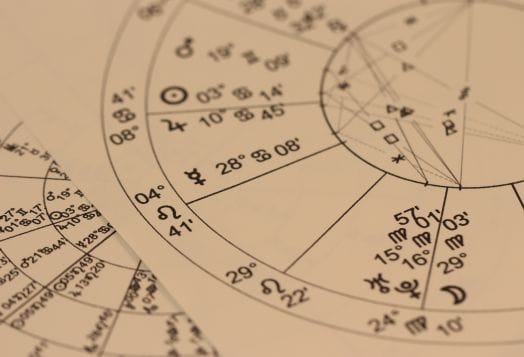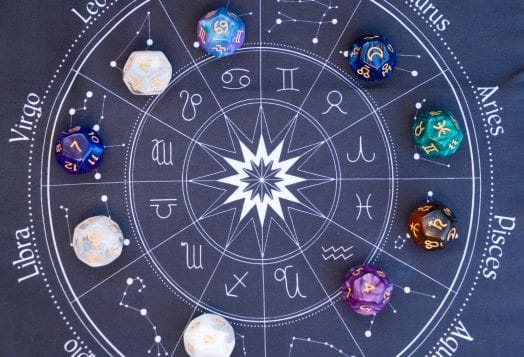You opened your kundli, hoping for astro clarity, but ended up questioning your entire life and maybe your astrologer’s handwriting. Been there. All those houses, planets, and mystery signs can feel like a secret club where everyone’s fluent in Sanskrit... except you.
But guess what? You don’t need a PhD in astrology or a hotline to the stars. If you’ve ever Googled ‘kundali with explanation’ and immediately regretted it, this is your sign (pun intended) to stick around.
We're breaking it down in just three easy steps, minus the jargon, plus a little sass.

What Even Is a Kundli and Why It’s the OG Life Map
A Janam Kundli (or birth chart) is a map of the sky at the exact moment and place of your birth. Drawn from Vedic astrology, your kundli is essentially your blueprint written by the stars. It reveals everything from your personality quirks to your career tendencies, relationships, karma patterns illuminated by angel number 111, and even how well you’ll handle family WhatsApp drama. To dive deeper into your relationship destiny, discover what your kundali says about love or arranged marriage.
Created using your birth time chart, a kundli is divided into 12 planetary houses, and each one represents a different aspect of life. When you learn how to read a kundli, you unlock a deeper understanding of your strengths, challenges, and soul journey through efficient Vedic chart interpretation.
Below, we’ll show you how to read your kundali in three easy steps, help you understand the houses in kundli, and give you tips so good, you'll want to forward this to your astrology group chat. Whether you're here to figure out your life path, marriage timing, or why Mercury always seems to be in retrograde when things go wrong, we have the answers.
Getting Familiar with Kundli Terms
Before we jump into the steps of how to read a kundli, let’s decode some key terms you’ll keep seeing. Think of this as your kundli glossary—quick, essential, and jargon-free.
Lagna (Ascendant): This is the zodiac sign rising on the eastern horizon at the exact time of your birth. It forms the 1st house in your kundli and defines your personality, physical appearance, and overall life direction.
Rashi (Zodiac Sign): There are 12 rashis, from Aries to Pisces. Each house in your kundli is occupied by one of these signs, which influences how that area of life plays out.
Bhava (House): Your kundli is divided into 12 houses, each representing a different aspect of life, like family, career, relationships, etc.
Graha (Planet): The nine main planets in Vedic astrology—Sun, Moon, Mars, Mercury, Jupiter, Venus, Saturn, Rahu, and Ketu—affect your kundli based on their position in different signs and houses.
Navamsa, Dasha, Aspects: These are more advanced topics for down the line. For now, just know they add nuance to your reading but aren't needed to get started.
Now that you're familiar with the basic lingo, let’s move on to the actual reading.
Step One: Know the Structure of Your Kundli
Before diving into interpretation, you need to understand the horoscope chart layout, because the shapes and symbols in your kundli aren’t just for decoration.
Start with the Layout: North vs South Style
In Indian astrology, kundlis typically come in two formats:
North Indian chart: Diamond-shaped, with the 1st house (your Lagna) always fixed at the top.
South Indian chart: Square-shaped, where signs stay fixed and houses rotate.
Both are valid; it’s just a matter of which format you prefer.
Explore The Boxes and Signs
There are 12 boxes in your kundli; each one is a house representing a domain of life. They’re numbered with the zodiac signs (Aries = 1, Taurus = 2, Gemini = 3… all the way to Pisces = 12). That number doesn’t mean the house number—it tells you what zodiac sign is ruling that house.
For example, if the box labeled '1' appears in your 10th house, that means Aries rules your career.
Spot the Planets
Now look for planetary symbols or shorthand:
Su = Sun
Mo = Moon
Ma = Mars
Me = Mercury
Ju = Jupiter
Ve = Venus
Sa = Saturn
Ra = Rahu
Ke = Ketu
Each planet adds its energy to whichever house and rashi (zodiac sign) it occupies.
So, before you learn how to read a lagna chart, master this layout. It’s like knowing where the players are before calling the game.
Step Two: Understand the 12 Houses
Now that you’ve figured out the layout, let’s go on to understanding how to read kundli houses—the foundation of any good Vedic chart interpretation.
Each of the 12 houses (called bhavas) reflects a part of your life. The Lagna or ascendant is your 1st house, and everything spins out from there.
Here’s your cheat sheet to the houses:
House | Represents |
1st | Self, appearance, personality |
2nd | Wealth, speech, and family values |
3rd | Siblings, courage, communication |
4th | Mother, home, emotional security |
5th | Children, creativity, romance |
6th | Enemies, health, and obstacles |
7th | Marriage, partnerships |
8th | Transformation, secrets, longevity |
9th | Luck, dharma, higher knowledge |
10th | Career, fame, reputation |
11th | Gains, networking, aspirations |
12th | Losses, detachment, spirituality |
House + Planet = Prediction
The energy of each house changes based on the planet occupying it. For instance:
Mars in the 7th = fiery relationships
Jupiter in the 9th = strong spiritual inclination
Learning how to read a lagna chart for marriage? Look at the 7th house, specifically Venus and Mars, and explore kundli matching for deeper insights into relationship dynamics. These are key marriage indicators in the kundli.

Step Three: Interpret Planets and Zodiac Signs
Reading the houses is only half the story. The real magic happens when you connect the planet, the zodiac sign, and the house—the holy trinity of astrology.
Each of the Navagraha (9 planets) plays a role in your life:
Sun: Ego, authority
Moon: Emotions, mind
Mars: Action, aggression
Mercury: Communication
Jupiter: Wisdom, expansion
Venus: Love, beauty
Saturn: Discipline, karma
Rahu: Obsessions, illusions
Ketu: Detachment, spirituality
And every rashi (zodiac sign) flavours that planet’s energy. For example:
Moon in Cancer = emotionally nurturing
Mercury in Gemini = quick-witted and sharp
Saturn in Capricorn = structured and ambitious
Let’s put it together: Sun in Leo in the 10th house = a natural-born leader with a public presence. Beyoncé has this combo, FYI.
So, whether you’re looking for career clues or diving into marriage indicators in kundli, always analyse:
Planet + Sign + House = Interpretation
Bonus Tips For Your Next Astrology Party
Once you’ve nailed the basics, here are some expert-level hacks to level up your self-reading skills:
Learn abbreviations: Su = Sun, Mo = Moon, Ma = Mars, etc.
Check planet strength: Is the planet exalted (super strong) or debilitated (weakened)? Use tools to assess planetary strength in the kundli.
Don’t skip Dasha periods: Use online Vimshottari Dasha calculators to see which planet is currently influencing your life.
Explore Shadbala: A technical but powerful system to measure planetary strength in kundli.
This Is Just the Beginning of Your Kundli Obsession
Congrats, you've just learned how to read your kundli without running away screaming. You now understand how to read a lagna chart and have even gotten the hang of how to read kundli houses.
Your kundli is your otherworldly fingerprint: it’s personal, powerful, and ever-revealing. The deeper you go into your birth chart reading, the more you uncover.
Want to explore your past lives? Curious about your soul’s purpose? This is where it begins. Keep decoding. Keep discovering.
FAQs That Everyone Wants Answered
Q1: What is the best way to start reading Kundli for beginners?
Start with identifying your Lagna (ascendant), understanding the 12 houses, and spotting where each planet sits. Focus on learning one concept at a time: house meanings, planetary traits, and sign qualities.
Q2: How do you find the Lagna in a Kundli?
The Lagna or ascendant is the 1st house in your kundli. It’s based on the exact time and place of your birth. It sets the tone for the rest of your chart and is your core identity.
Q3: Which house is most important in Kundli?
While all houses matter, the 1st house (Lagna) is considered the most crucial as it represents your inner self. The 7th (marriage), 10th (career), and 4th (home) are also key areas people often check first.
Q4: Can I read a Kundli without an astrologer?
Sure, you can start with tools, apps, and blogs like this one. But deeper interpretations might require a seasoned astrologer for precision.
Q5: What does each house in Kundli represent?
Each house represents a life theme, from self-image (1st) and relationships (7th) to career (10th). Refer to our house-by-house breakdown above for full clarity.
Disclaimer: This information provided is intended for general informational purposes only. It is not a substitute for professional advice or guidance. For personalised recommendations or specific concerns, please consult a certified professional.




